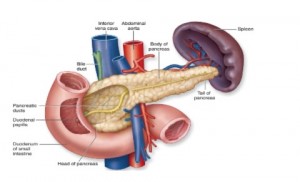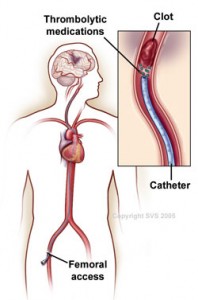Hemorrhagic Complications of Anticoagulant Treatment. part 1
FILED IN Other No Comments
This chapter about hemorrhagic complications of anticoagulant treatment is part of the seventh ACCP Conference on Antithrombotic and Thrombolytic Therapy: Evidence Based Guidelines. Bleeding is the major complication of anticoagulant therapy. The criteria for defining the severity of bleeding varies considerably between studies, accounting in part for the variation in the rates of bleeding reported. The major determinants of vitamin K antagonist-induced bleeding are the intensity of the anticoagulant effect, underlying patient characteristics, and the length of therapy. There is good evidence that vitamin K antagonist therapy, targeted international normalized ratio (INR) of 2.5 (range, 2.0 to 3.0), is associated with a lower risk of bleeding than therapy targeted at an INR > 3.0. The risk of bleeding associated with IV unfractionated heparin (UFH) in patients with acute venous thromboembolism (VTE) is < 3% in recent trials. This bleeding risk may increase with increasing heparin dosages and age (> 70 years). Low molecular weight heparin (LMWH) is associated with less major bleeding compared with UFH in acute VTE. UFH and LMWH are not associated with an increase in major bleeding in ischemic coronary syndromes, but are associated with an increase in major bleeding in ischemic stroke. Information on bleeding associated with the newer generation of antithrombotic agents has begun to emerge. In terms of treatment decision making for anticoagulant therapy, bleeding risk cannot be considered alone, ie, the potential decrease in thromboembolism must be balanced against the potential increased bleeding risk.
(CHEST 2004; 126:287S-310S)
Key words: anticoagulant; bleeding; complications; heparin
Abbreviations: AMS = anticoagulation management services; APTT = activated partial thromboplastin time; ASPECT = Anticoagulants in the Secondary Prevention of Events in Coronary Thrombosis; CARS = Coumadin-Aspirin Reinfarction Study; CHAMP = Combination Hemotherapy and Mortality Prevention; CI = confidence interval; DVT = deep vein thrombosis;
Reproduction of this article is prohibited without written permission from the American College of Chest Physicians.
Correspondence to: Mark N. Levine, MD, MSc, Room 104, First Floor, Henderson Research Centre, 711 Concession St, Hamilton, Ontario L8V 1C3 INR = international normalized ratio; IST = International Stroke Trial; LMWH = low molecular weight heparin; NSAID = nonsteroidal anti-inflammatory drug; OR = odds ratio; RCT = randomized controlled trial; SPAF = Stroke Prevention in Atrial Fibrillation; SPIRIT = Stroke Prevention in Reversible Ischemia Trial; SPORTIF = Stroke Prevention Using an Oral Thrombin Inhibitor in Atrial Fibrillation; TIMI = Thrombolysis in Myocardial Infarction; UFH = unfractionated heparin; VTE = venous thromboembolism; WARIS = Warfarin-Aspirin Reinfarction Study.

